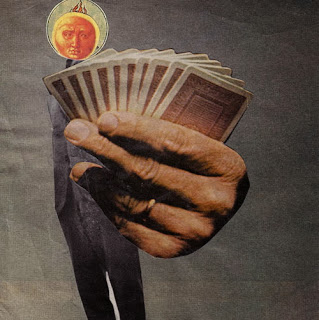Yahoo For Yellowbellies
The title of the lecture was to be The Immediacy of Writing. Burroughs had often stated in the past that "Writing is remembering accurately," alluding to the fact that writing exists solely in the past. To be even more explicit, he states "Writing will never catch up to the present". Burroughs felt that this reality shouldn't keep us from trying.
"There is music in the written word, an improvisationally erect tone, but it has been choked off by an unknown, extraterrestrial viral infection."
One way to cure this "viral infection" is the use of the cut-up technique, a unique and extremely powerful method for bringing the written word as close to the present moment as possible. Though powerful, this fragile technique quickly falls apart if abused. Burroughs sensed that the inherent power of cyberspace provided a unique opportunity to "cut-up" the globe. He correctly saw that a cybernetic window had opened revealing the trending present, where the dominant memetic winds of the whole globe intersected in one plane. The applications of this window were limitless in his estimation, affording anyone the uncanny ability to forecast and re-sculpt the present moment at will. He then suggested that no intelligent government would ever allow this "wishing machine gone wild" to fall into the hands of the populace.
Obviously this "wishing machine gone wild" now exists. Just how powerful it can be and just how long it will remain is not yet known.
Does it work?
This is the wrong question.
The correct question is
"How strong is the result?"
"How strong is the result?"
Again, the key is not to abuse the method. Use sparingly and only when inspiration strikes. Lucky for you, the materia will be ready and waiting. Just make sure you have a strong sense of humor.

































































